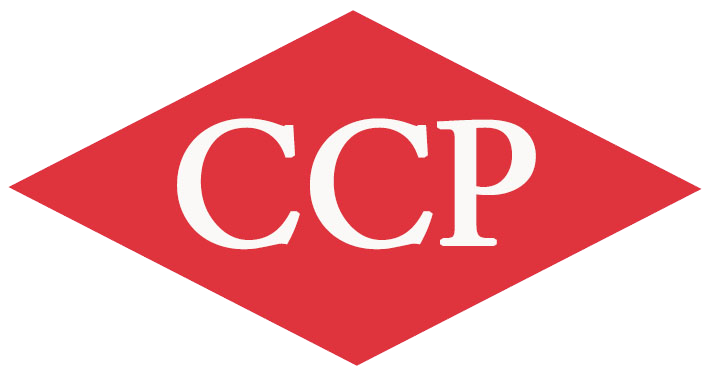CCP PBT LW Series - PBT for Laser Welding
Release time:
2018-03-19
The CCPPBTLW series is a brand new type of polybutylene terephthalate (PBT). Researchers at CCP have successfully improved its morphology, increasing the laser transmittance from 30% to nearly 60%—a first for PBT. The mechanical properties of the product are close to the standard model. Thanks to the improvement in laser transmittance, not only has the welding speed significantly increased, but the processing window has also been greatly expanded. The circumferential laser welding process is shown in Figure 1. Under the same laser power (50 W) and the same thickness of transparent welding parts (2 mm), the welding speed of standard PBT using a laser with a wavelength of 1064 nm is only 5-12 mm/s; whereas the welding speed of the CCPPBTLW series reaches 10-70 mm/s. Similar effects can also be achieved under other laser welding processes (such as quasi-synchronous welding) and processing parameters (such as higher laser power).
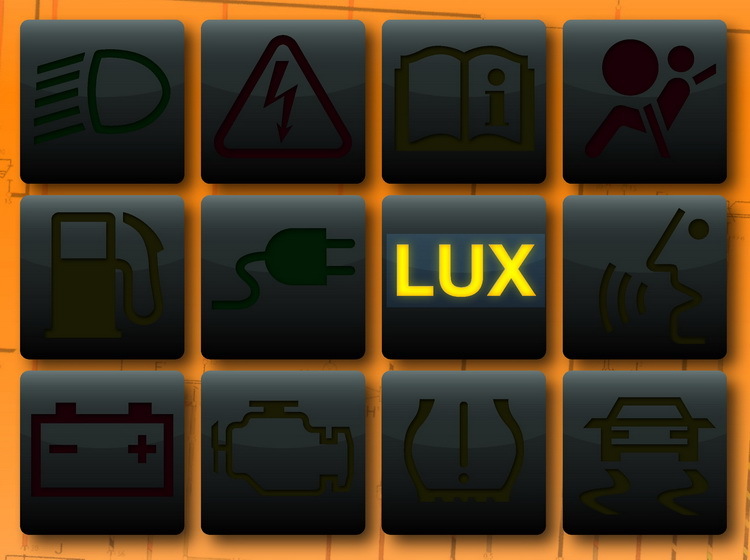
1. High and stable laser transmittance
The CCPPBTLW series is a brand new polybutylene terephthalate (PBT). CCP researchers have successfully improved its morphology, increasing the laser transmittance from 30% to nearly 60%—a first for PBT. The mechanical properties of the product are close to standard models.
Thanks to the improvement in laser transmittance, not only has the welding speed significantly increased, but the processing window has also been greatly expanded. The circumferential laser welding process is shown in Figure 1. Under the same laser power (50 W) and the same thickness of transparent welding parts (2 mm), the welding speed of standard PBT is only 5-12 mm/s when using a laser with a wavelength of 1064 nm; whereas the welding speed of the CCPPBTLW series reaches 10-70 mm/s. Similar effects can also be achieved under other laser welding processes (such as quasi-synchronous welding) and processing parameters (such as higher laser power).
Higher laser transmittance also brings other advantages: for example, it allows for welding thicker components. This means that applications that previously required other connection methods can now be completed using laser welding. Additionally, the laser power can be reduced to extend the life of the laser. Therefore, the laser-transparent plastic CCP PBT LW series not only opens up new possibilities for laser welding but also significantly improves process efficiency.
Fast and reliable - advantages for processors at a glance:
■ More freedom in design
■ Wide processing window
■ Shorter cycle times
■ High process stability
■ High quality stability
■ Greater flexibility
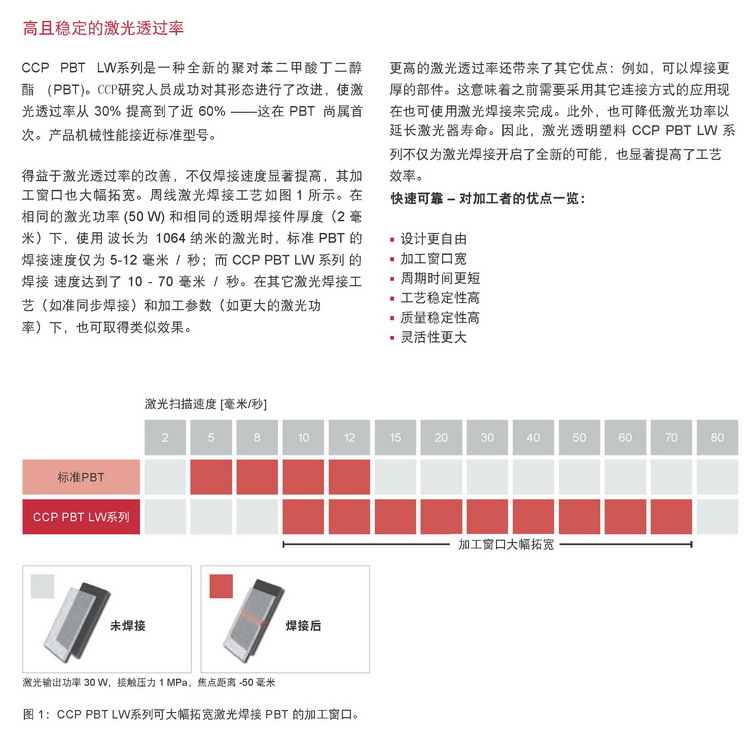
2. Small scattering centers are the solution
From a principle perspective, the laser welding of semi-crystalline thermoplastics is more difficult than that of amorphous plastics because the laser beam scatters on spherulites. This issue is particularly common in semi-crystalline plastics, especially PBT. The CCP PBT LW series semi-crystalline PBT has achieved unprecedented optical performance. Compared to traditional PBT, the CCP PBT LW series allows more laser to pass through, and the width of the scattered laser beam is significantly reduced (Figures 2 and 3).
From a physical principle, if the size of the scattering center is smaller than the wavelength of the incident light beam, the deflection angle of the beam is very small. For the most common neodymium-doped yttrium aluminum garnet lasers or diode lasers, the wavelength is about 1,000 nanometers (i.e., 1 micron). Therefore, the solution is to limit the size of the spherulites to less than 1 micron (Figure 4).
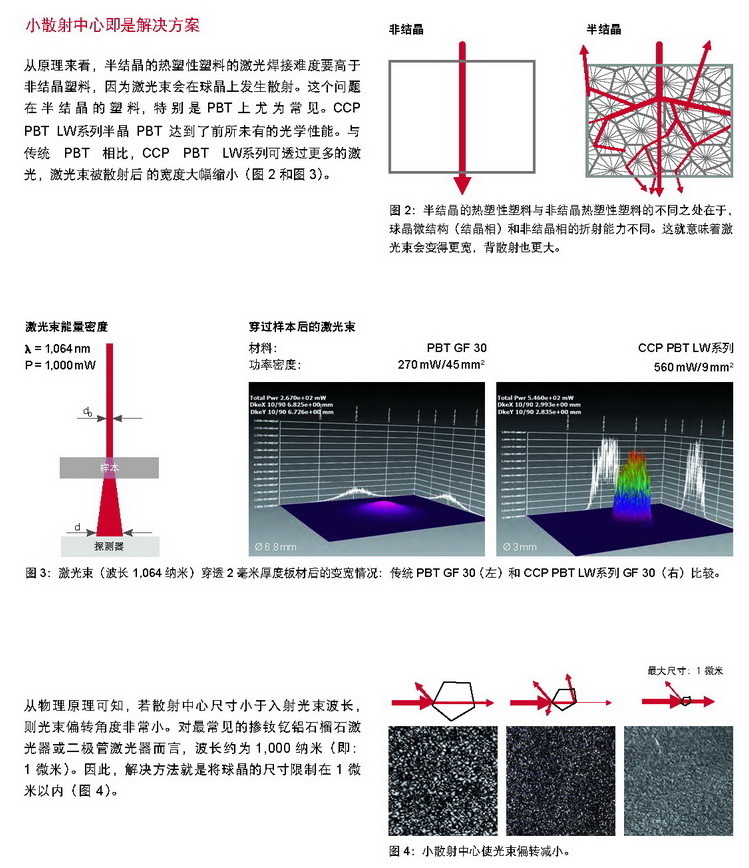
3. Unprecedented optical performance
From the transmission curve, we can clearly observe the improvement in the optical performance of PBT. In the wavelength range of the welding laser, the laser transmittance of the CCP PBT LW series is about twice that of standard PBT (Figure 5).
In addition, not only has the transmittance improved, but the quality of the transmitted laser has also significantly improved. The results of the Ubbelohde sphere scattering experiment show that in the wavelength range of laser welding, the laser can hardly penetrate traditional non-enhanced PBT directly—all beams will scatter to some extent. However, for the CCP PBT LW series, the directly transmitted laser can reach about 50%, thus significantly reducing the widening of the laser beam (bottom of Figure 5).
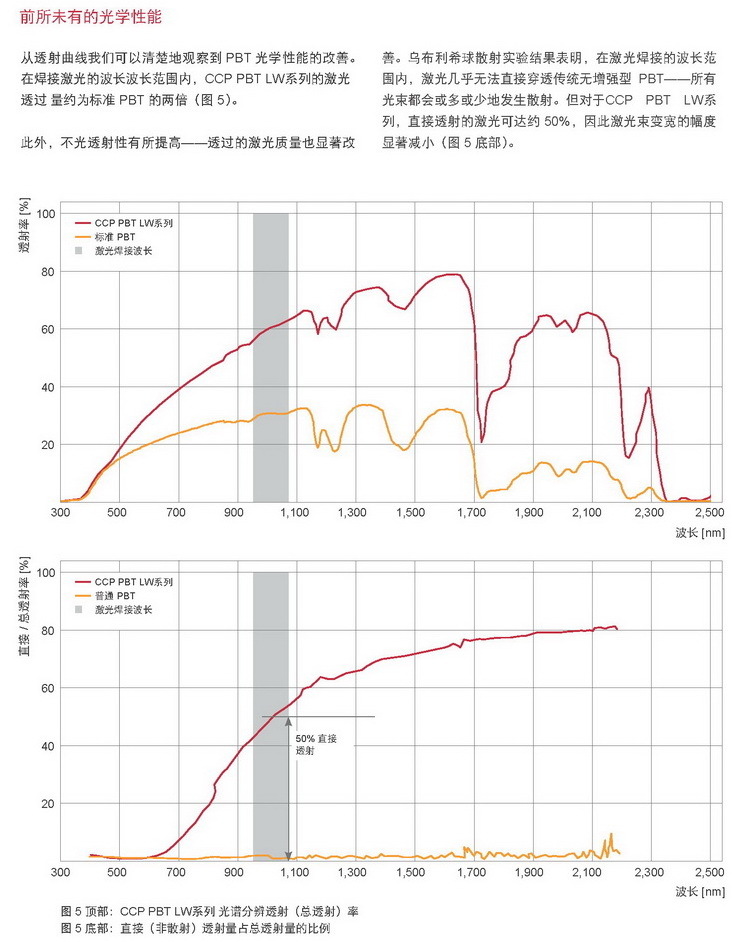
When observing the sample against the sun, the practical significance of these theoretical values can be better understood: the number of light rays passing through the CCP PBT LW series increases. Considering that the new material's ability to transmit laser is far higher than that of sunlight (wavelength 380 - 780 nanometers), the advantageous characteristics of this new plastic become very apparent (Figure 6).
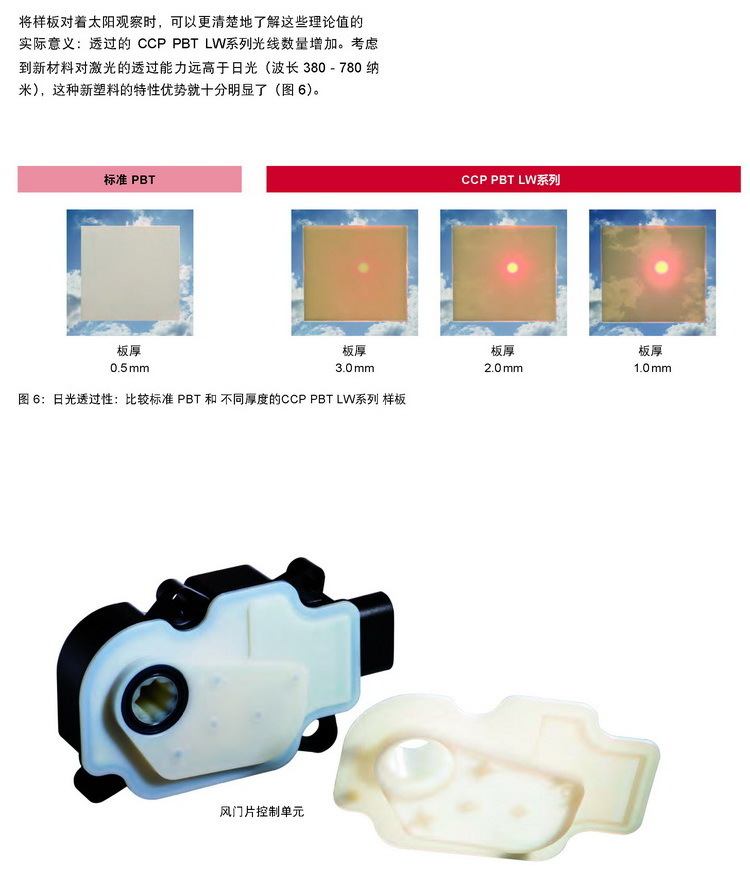
4. Laser welding-A clean connection method
Laser transmission welding, abbreviated as laser welding, is a joining method with multiple advantages, providing an economical and efficient solution beyond traditional connection methods such as bolts and adhesives. The principle of laser welding: the laser beam penetrates the laser-transparent component, melting the component below that absorbs the laser, and the molten plastic transfers heat to the laser-transparent material, ultimately forming a weld seam. Therefore, laser welding requires a laser-transparent material and a laser-absorbing material (Figure 7).
When sensitive components are included in the components to be connected, non-vibrating connections become very important. Therefore, lasers have significant advantages when welding components with flexible geometric designs and small parts that need to remain clean during operation. This is particularly necessary for applications in electronics, pharmaceuticals, and automotive control unit housings, sensor assemblies, etc.
Compared to other welding methods, laser welding has the following advantages:
■ No need to store other materials, such as adhesives and primers
■ No friction
(Friction welding and ultrasonic welding may cause wear)
■ No mechanical load on molded parts
■ Lower heat and limited to local areas
■ Almost no wear
■ Can weld materials of different viscosities
■ Welds can be repaired
■ The welding process does not produce vibrations
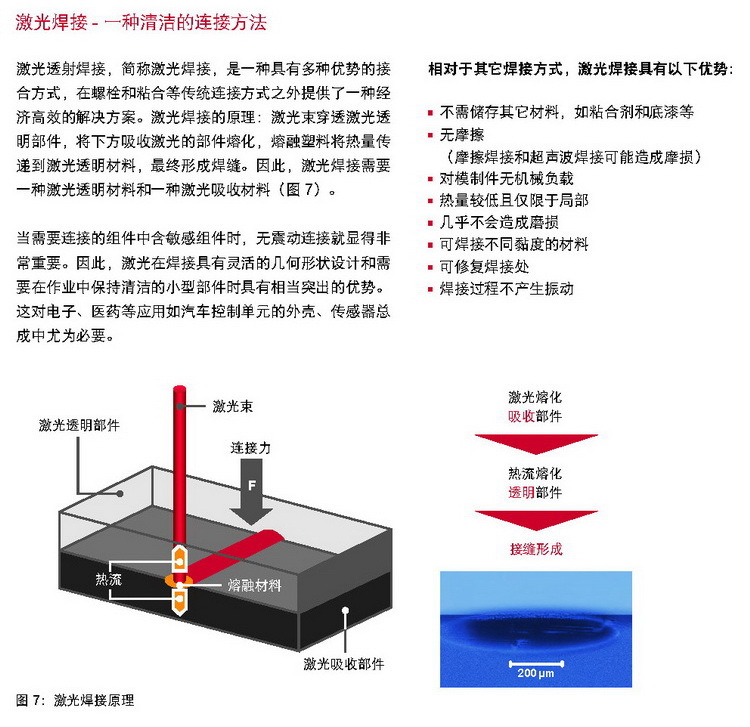
Tag:
Next Page
Recommend News
2018-04-09
Share
